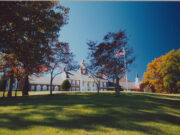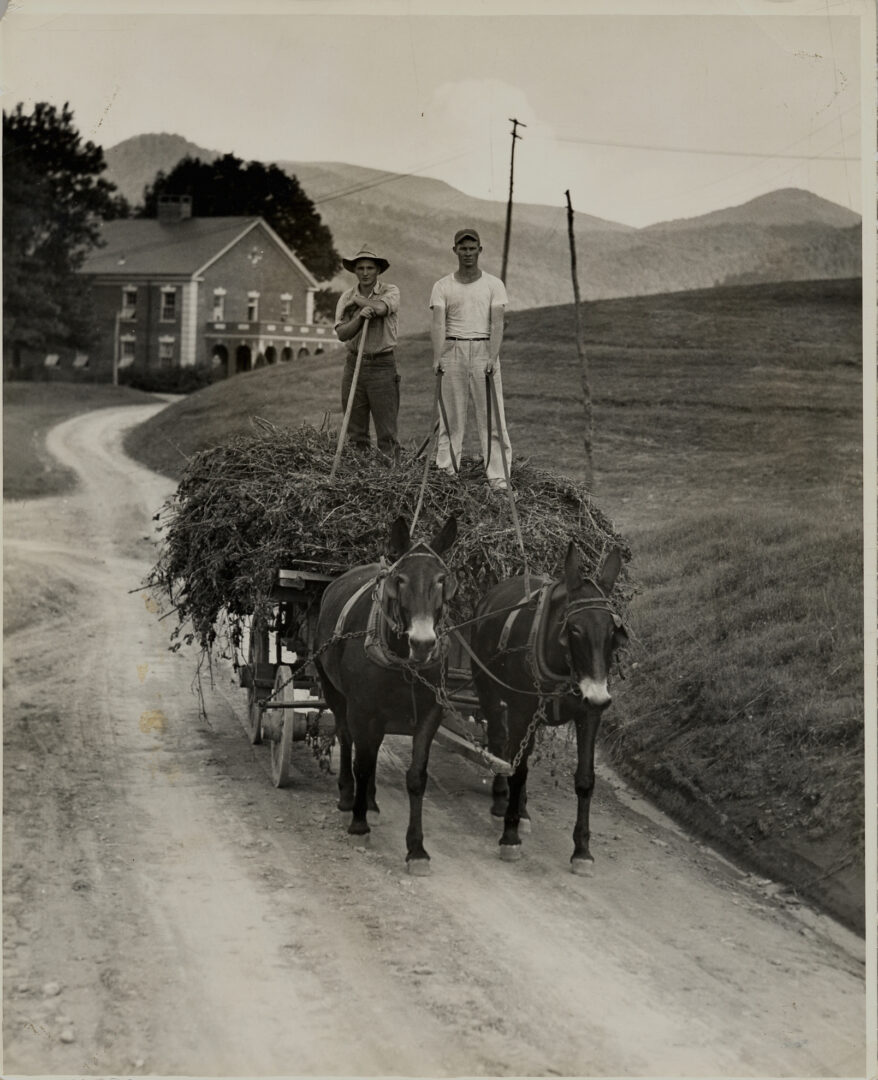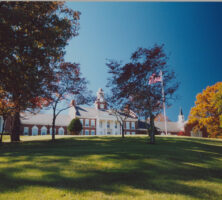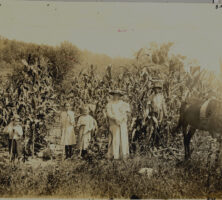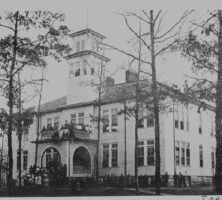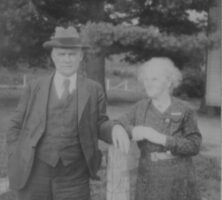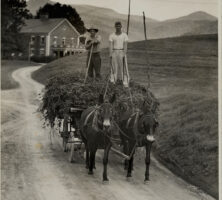Rabun Gap–Nacoochee School is one of the largest coeducational, college-preparatory boarding schools in the Deep South, serving boarding and day students in grades 6-12. Located in Rabun Gap, in Rabun County, the 1,400-acre campus is cradled in the mountains of northeast Georgia. The school combines a strong academic program, mountain setting, and Presbyterian heritage to nurture and challenge students of diverse backgrounds as they prepare for college and a lifetime of service.
Rabun Gap Industrial School
Andrew Jackson Ritchie, a Rabun County native, and his wife, Addie Corn Ritchie, founded the Rabun Gap Industrial School in 1905 to serve the children of the isolated and poverty-stricken community. With $1 and a personal note, Ritchie bought a five-acre hilltop for the school. Construction began on the two-story main building, designed by Atlanta architect Haralson Bleckley (son of Rabun County native Logan Bleckley), with pledges of cash support and manual labor. The school was open to both boys and girls.
The Farm Family Years
Donations to the school declined during the World War I (1917-18) period, but Ritchie traveled to Boston, Massachusetts, and New York City to solicit funding, with a unique plan for expansion and development called the Farm Family Settlement Program. Whole families would live at Rabun Gap, with the men learning agriculture, the women studying homemaking and health care, and the children continuing with regular studies. The Carnegie Foundation, the Rockefellers, and other northern philanthropists provided generous support for his idea. However, it was Ernest Woodruff, of the Coca-Cola Company and Trust Company of Georgia, who proved to be the bedrock supporter of Rabun Gap. According to school legend, Ritchie went door to door in Atlanta’s Inman Park neighborhood asking for donations; at the Woodruff home, Emily Winship, Woodruff’s wife, contributed money from her household fund and urged her husband to help. (Over time, several members of the Woodruff family, as well as the Robert W. Woodruff Foundation, have made donations to the school.) With additional support from the United Daughters of the Confederacy, the school expanded with more acreage and the construction of farmhouses and barns. The farm family program remained successful until the 1970s, when textile manufacturing became key in Rabun County.
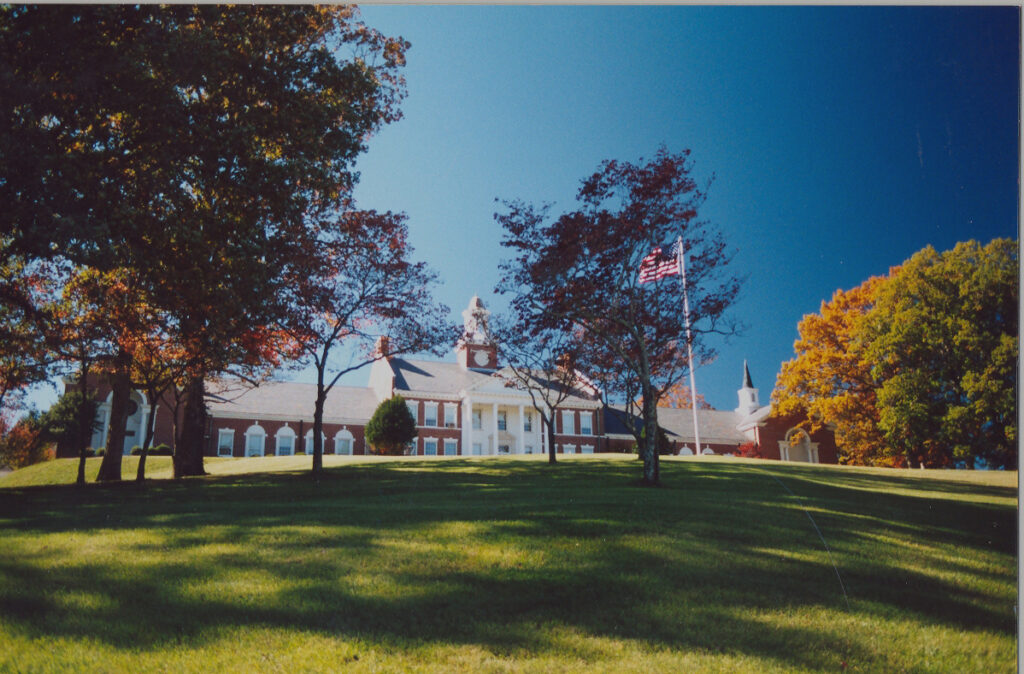
Courtesy of Rabun Gap-Nacoochee School
Merger with the Nacoochee Institute
After a 1926 stove fire destroyed the school, Rabun Gap merged in 1927 with the Nacoochee Institute, founded in 1903 and formerly located in Sautee. Headed by the Reverend John Knox Coit, the Nacoochee Institute was a boarding school for boys and girls as well as a public school for the students of White County. Ironically, six weeks after Rabun Gap’s fire, the schoolhouse of the Nacoochee Institute had burned as well. In September 1928 the Rabun Gap–Nacoochee School opened at Rabun Gap with a new school building. Ritchie served as president and Coit as copresident.
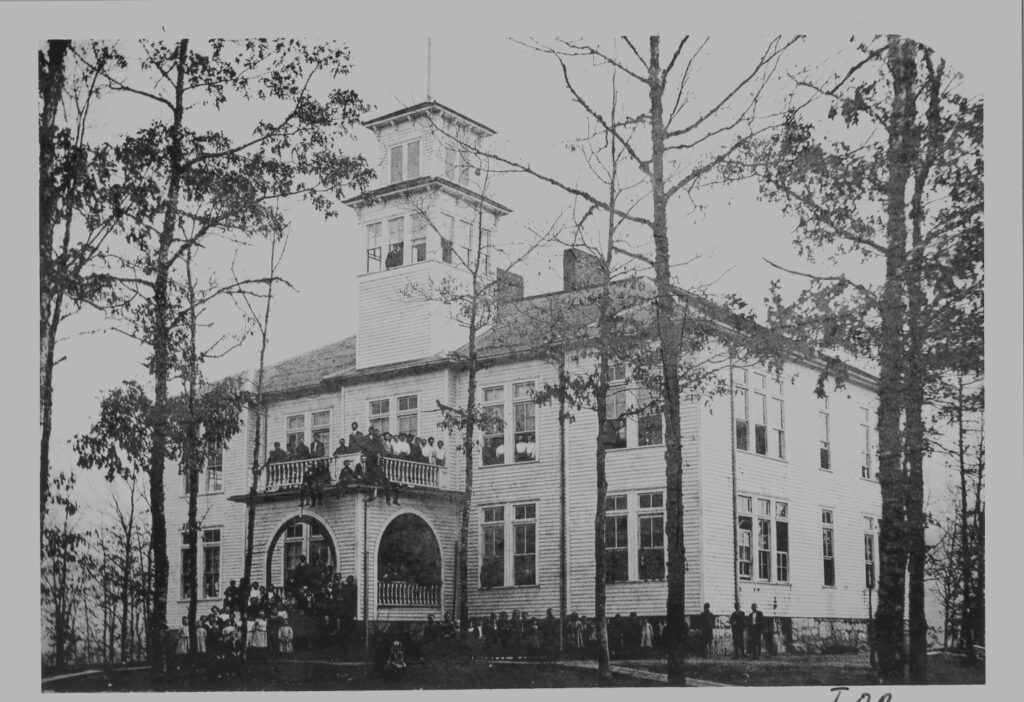
Courtesy of Georgia Archives.
In 1927 the new school established a covenant with the Presbyterian Church (later PCUSA), a relationship that still exists. In 1934 Ritchie and members of the board of trustees added two years of junior college to the Rabun Gap curriculum. Training teachers for the county was a main goal, and courses were patterned after those offered at the University of Georgia. World War II (1941-45) brought an end to the junior college program, as the war siphoned off enrollment.
Leadership and Growth
The end of the 1930s brought numerous changes in leadership for Rabun Gap–Nacoochee School. Following the retirement of Ritchie and Coit, George Bellingrath served as president from 1939 to 1948. O. C. Skinner, former industrial manager of the Berry School in Rome (founded by educator Martha Berry), was president from 1949 to 1956. Several buildings were added during Skinner’s tenure, including the Addie Corn Ritchie Dining Hall, the Emily and Ernest Woodruff Chapel wing to Hodgson Hall, the Annie Lee Jones Library wing of Hodgson Hall, and the Arthur W. Smith Industrial Shop. From 1956 to 1984 Karl K. Anderson served as president. Under his leadership the Andrew Jackson Ritchie Gymnasium, the O. C. Skinner Natatorium, and four dormitory residence halls named for George Woodruff (son of Ernest),Irene Woodruff (wife of George), Ernest Woodruff, and Karl Anderson were built. Financial support also came from the Rabun Gap–Nacoochee guilds of Athens and Atlanta, the Rabun Gap–Nacoochee Club of Atlanta, and the Presbyterian Church.
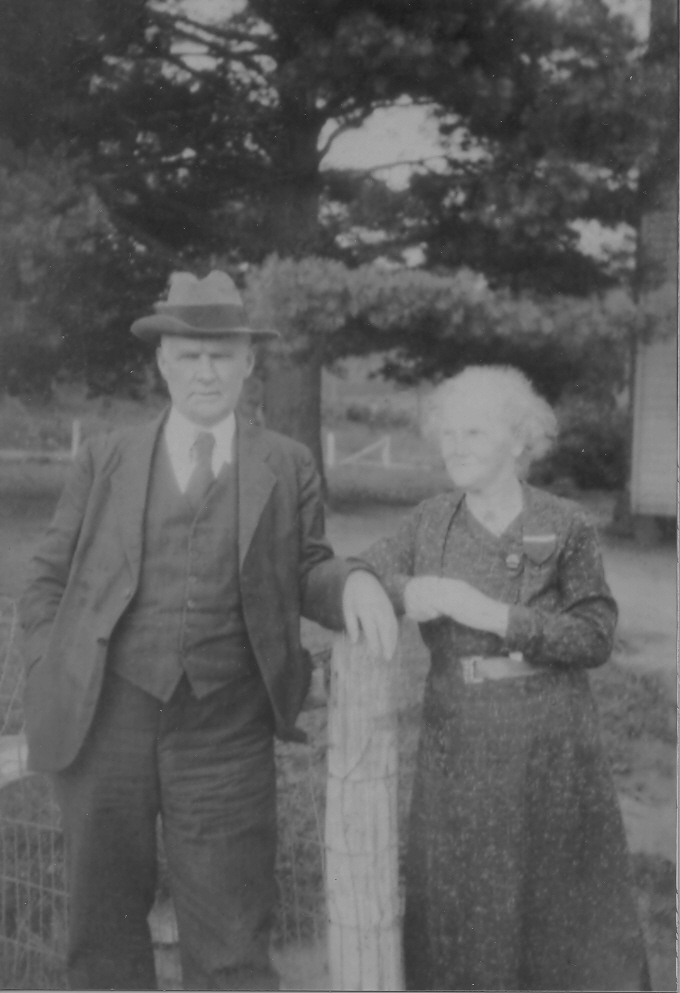
Courtesy of Rabun Gap-Nacoochee School
Having partly functioned as a public school for students in the north end of Rabun County, Rabun Gap–Nacoochee School became fully private in the fall of 1977, as Rabun County consolidated its public high schools. Struggling financially with the loss of public monies, the school suffered from less stable enrollment and the need to reconnect with its core strengths from the past. Anderson retired as president in 1984, and his successors were the Reverend Bruce Dodd (1984-92), Robert Johnston (1992-96), and Gregory Zeigler (1996-2004). They moved to create a college-preparatory curriculum and enforce more rigorous admissions standards. A building program, funded in part by a bequest of George Woodruff, resulted in the Morris Brown Science Building, the Artsand Technology Building, a new library, and athletic fields.
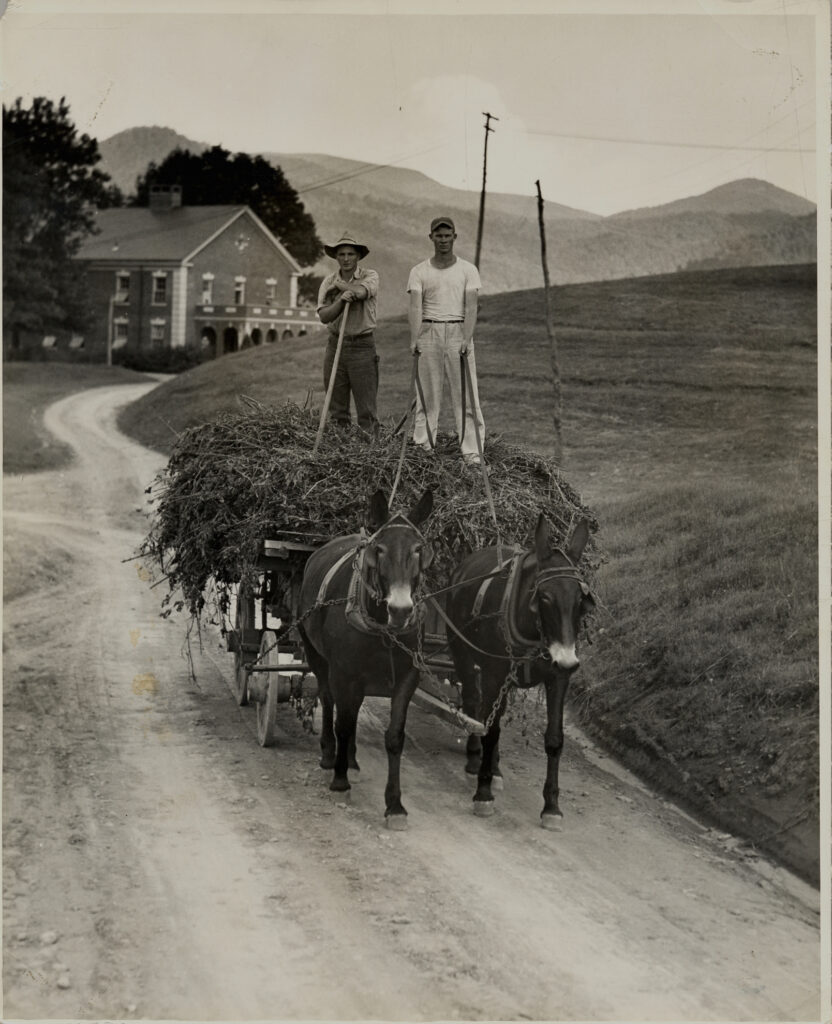
Courtesy of Rabun Gap-Nacoochee School
Foxfire
During the 1960s the school reconnected with its mountain heritage in an innovative way. In 1966 Eliot Wigginton, a young English teacher, was struggling to teach bored students. Seeking to make his courses relevant, he encouraged his students to interview older people in the community about their lives and southern Appalachian culture. The students documented such traditions as planting by the signs of the moon, building a log cabin, and mountain lore, then published the material in a magazine called Foxfire. The Foxfire program continued until 1977, when Rabun Gap–Nacoochee School became a private institution. Foxfire then moved to Rabun County High School to serve the local public school population.
Second Century of Service
In 2004 John Marshall assumed leadership of the institution, and in 2011 Anthony H. Sgro succeeded him as president. The motto of “work, study, worship,” is still dominant. Many of the school’s college-bound students are the first generation in their families to attend college, and two-thirds of its students receive some form of financial aid. In fall 2011 there were 350 students (half of them boarding students).


